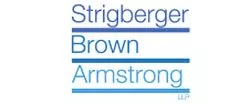In a recent "Right to Sue" application, Decision No. 616/21, 2021 ONWSIAT 848, Vice Chair Dee of the WSIAT considered the issue of whether a plaintiff in a wrongful dismissal action was barred from pursuing such an action against her employer, an auto parts retailer, as a result of section 31 of the Workplace Safety Insurance Act ("WSIA").
The civil action arose out of a workplace dispute between the plaintiff and the owner of the employer. It was alleged that the owner publicly berated and chastised the plaintiff in front of customers for neglecting her duties. A few days later, the head office of the employer's franchisor (the employer was a retail franchise), received an anonymous complaint regarding the owner's behaviour.
The owner alleged that the call was made by the plaintiff or someone associated with the plaintiff. An investigation by senior staff members was conducted in order to find out who made the call. During the investigation, the plaintiff alleged that she was threatened with very substantial financial repercussions for her comments about the owner's alleged actions. As a result, the plaintiff saw her family doctor and was diagnosed with a psychological disorder arising from this incident. She then went on medical leave and filed a claim with WSIB for mental stress. The plaintiff did not return to work and filed a Statement of Claim against the employer seeking damages for psychological injuries and constructive dismissal.
The employer then filed a "Right to Sue" Application alleging that the plaintiff's entire action was barred by section 31 of the WSIA. It was conceded that the plaintiff was a "worker", the defendant was an "Schedule 1 Employer" and the injuries were sustained during the plaintiff's "course of employment". However, the issue that had to be determined was whether the plaintiff's injuries were so "inextricably linked" to the constructive dismissal claim that the applicant could not seek damages for same in a civil action.
The defendant's argument was summarized as follows:
[T]he circumstances giving rise to the plaintiff's workers' compensation claim for a chronic mental stress injury are inextricably linked to the circumstances giving rise to her civil action. It is therefore submitted that the plaintiff is restricted by the WSIA to only those rights available to her under the WSIA. [emphasis added]
Vice Chair Dee rejected the application of the "inextricable link test" as the basis for a "Right to Sue" Application, stating: "the phrase inextricable link is not found in the WSIA and the use of the phrase in prior Tribunal decisions has not been entirely consistent. Depending on how the inextricable link test is applied the test may result in the removal of rights to bring civil actions beyond that contemplated by the WSIA."
Vice Chair Dee held that for the WSIA to apply, the plaintiff must have sustained a personal injury by an accident arising out of and in the course of her employment. The WSIA provides compensation for personal injuries caused by workplace accidents and actions in respect of those injuries are taken away by the WSIA. The remedy under the WSIA is found under section 26(2) which states:
(2) Entitlement to benefits under the insurance plan is in lieu of all rights of action (statutory or otherwise) that a worker..has or may have against the worker's employer or an executive officer of the employer for or by reason of an accident happening to the worker or an occupational disease contracted by the worker while in the employment of the employer.
Vice Chair Dee went onto state:
I find that the words "by reason of an accident happening to the worker or an occupational disease contracted by the worker" found in subsection 26(2) of the WSIA do not describe and injuring process that is separate and apart from an injury. These words do not describe circumstances that will result in the barring of a civil action unless the action seeks damages in respect of a personal injury that has been sustained as a result of the accident.
The fact that a civil action is based upon the same set of facts that are alleged to have caused a work-related injury (i.e. that they are inextricably linked) is therefore not sufficient to result in the removal of a right to bring a civil action under the WSIA. The words inextricably linked do not appear in the WSIA and it is the provisions of the Act that must govern. It is only when the damages claimed in the civil action result from the existence of a work-related personal injury that the right to bring a civil action is barred. (emphasis added)
Conversely, a claim for constructive dismissal is based upon an allegation of a breach of contract by the employer against the worker. The remedy for constructive dismissal is damages for pay in lieu of notice. It is not necessary to demonstrate the existence of a personal injury. As such, Vice Chair Dee held that the plaintiff's right of action for injuries sustained as a result of harassment and/or intentional infliction of mental harm was removed by the WSIA as these are injuries that fall within the purview of the WSIA. However, the plaintiff's constructive dismissal claim was not barred by the WSIA as the right of action in this regard does not fall under the WSIA.
This case confirms the limits of a "Right to Sue" application as section 31 does not bar all actions between workers and employers. Although section 31 may in effect bar an entire civil action from proceeding, it can only do so if the damages sought arise solely in relation to a personal injury that the worker sustained during the course of their employment. Other causes of action (e.g. constructive dismissal), which may arise from the same set of facts as a personal injury claim, do not fall under WSIA and therefore, can proceed before the courts.
As Vice Chair Dee noted, a removal of a right of action that was not based on a personal injury would be inconsistent with the general intent of the historic trade-off that underlies the very purpose of the WSIA. In order to maintain adherence to the historic trade-off it is necessary to interpret the WSIA in such a way that no rights of action are removed from workers against their employers unless those rights of action are also based upon the presence of an injury.
See: Decision No. 616/21, 2021 ONWSIAT 848 (CanLII)
The content of this article is intended to provide a general guide to the subject matter. Specialist advice should be sought about your specific circumstances.

